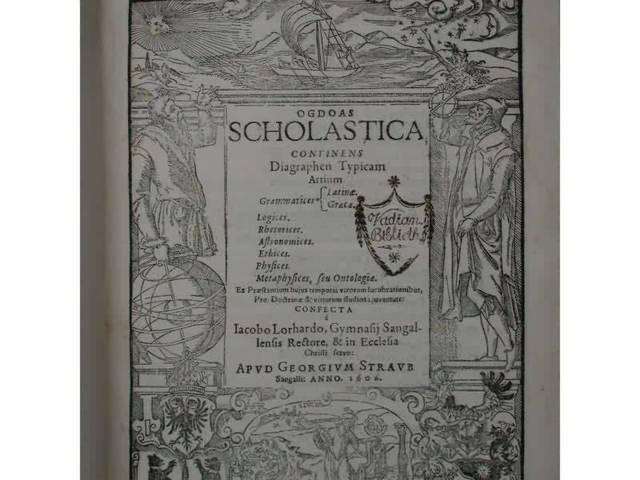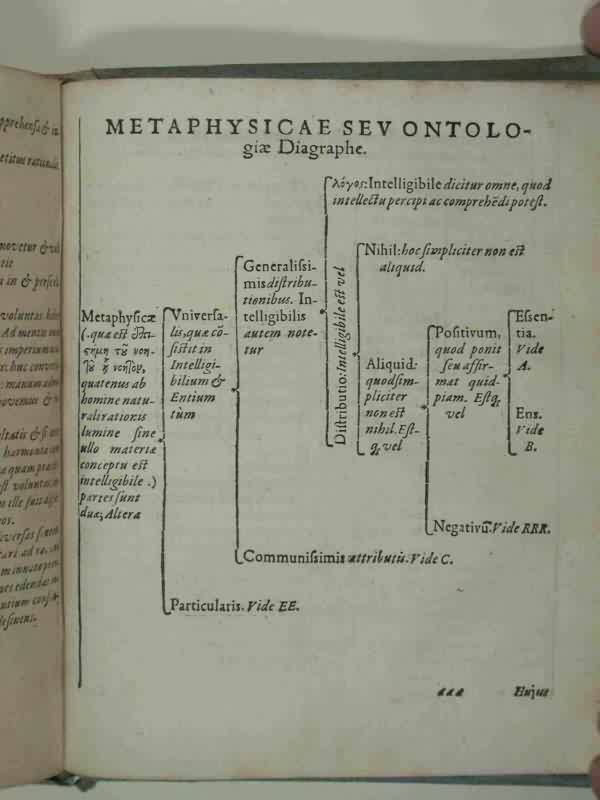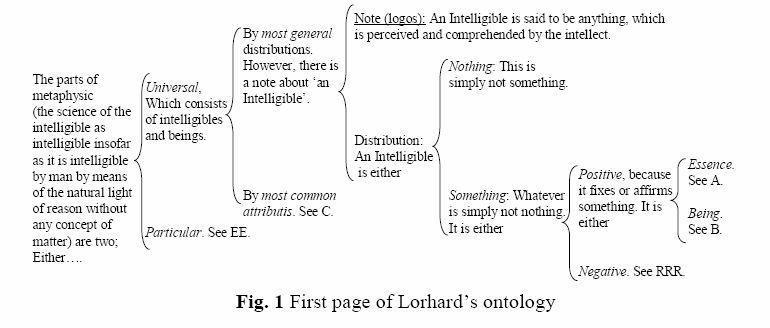Theory and History of Ontology (www.ontology.co)by Raul Corazzon | e-mail: rc@ontology.co
Jacob Lorhard (1561-1609): The Creator of the Term "Ontologia" (1606)
Contents of this Section
The Rise of Ontology in the Modern Era
This part of the section History of Ontology includes the following pages:
Birth of a New Science
The History of Ontology from Suárez to Kant
Selected bibliography on the History of Continental Ontology from Suárez to Kant
Jacob Lorhard (1561-1609): The Creator of the Term "Ontologia" (Current page)
Bibliography of the Ontologists from 16th to 18th Centuries:
I. From Fonseca to Poinsot (1560 - 1644)
II. From Scheibler to Lambert (1645 - 1777)
Francisco Suárez on Metaphysics as the Science of Real Beings
Selected bibliography on Suárez' Metaphysics
Editions and translations of the Metaphysical Works of Francisco Suárez
Index of the Pages on Modern Philosophy
Works by Jacob Lorhard
The first edition of his Ogdoas Scholastica contains the first occurrence of the Latin term"Ontologiae".
- Disputatio de systasei actionum. Tubingae: Georg Gruppenbach, 1591.
- Propositiones de vera et reali praesentia corporis et sanguinis Christi in s. coena. Tubingae: Gruppenbach, 1592.
- Disputatio de vera et Aristotelica methodo demonstrandi. Dissertation. (Defender: Georg Johannes Peplis). Tubingae: Gruppenbach, 1592.
- Liber de adeptione veri necessarii seu apodictici, in quo habes, candide lector, luculentam rationem et methodum conficiendi syllogismi necessarii, omnium philosophorum indefessis studiis et laboribus, ex obscurissimo Aristotele quaesitam. Tubingae: Gruppenbach, 1597.
- Ogdoas Scholastica, continens Diagraphen Typicam artium: Grammatices (Latinae, Graecae), Logices, Rhetorices, Astronomices, Ethices, Physices, Metaphysices, seu Ontologiae. Sangalli: Straub, 1606.
- Theatrum Philosophicum: In quo Artium Ac Disciplinarum Philosophicarum plerarumq[ue] omnium, Grammatices Latinae, Graecae, & Hebraeae: Logices; Rhetorices; Arithmetices; Geometriae; Musices; Astronomices; Ethices; Physices; Metaphysices; Praecepta, in perpetuis Schematismis ac Typis, tanquam in speculo, cognoscenda obiiciuntur. Basileae: Waldkirch, 1613. Second, expanded edition of Lorhard (1606).

Ogdoas Scholastica (1606): The Diagraph of Ontologia


Translation from: Peter Øhrstøm, Sara L. Uckelman, Henrik Schärfe, "Historical and Conceptual Foundations of Diagrammatical Ontology", in: Uta Priss, Simon Polovina, Richard Hill (eds). Conceptual Structures: Knowledge Architectures for Smart Applications, Proceedings of the 15th International Conference on Conceptual Structures, Sheffield, UK, July 22-27, 2007, Berlin: Springer 2007, pp. 374-386.
Pages in PDF format
English translation by Sara L. Uckelman of Chapter 8 of Ogdoas Scholastica: Diagraph of Metaphysic or Ontology
Marco Lamanna, Correspondences between Timpler's Work and that of Lorhard
Øhrstrøm, Peter, Uckelman, Sara L., Schärfe Henrik, - Historical and Conceptual Foundations of Diagrammatical Ontology
Abstract: During the Renaissance there was a growing interest for the use of diagrams within conceptual studies. This paper investigates the historical and philosophical foundation of this renewed use of diagrams in ontology as well as the modern relevance of this foundation. We discuss the historical and philosophical background for Jacob Lorhard's invention of the word "ontology" as well as the scientific status of ontology in the 16th and 17th century. We also consider the use of Ramean style diagrams and diagrammatic ontology in general. A modern implementation of Lorhard's ontology is discussed and this classical ontology is compared to some modern ontologies.
Øhrstøm, Peter, Schärfe Henrik, Uckelman, Sara L., - Jacob Lorhard's Ontology: a 17th Century Hypertext on the Reality and Temporality of the World of Intelligibles (PDF)
Abstract: Jacob Lorhard published his ontology in 1606. In this work the term ontologia ‘ontology’ was used for the first time ever. In this paper, it is argued that Lorhard's ontology provides a useful key to the understanding of the early 17th-century world view in Protestant Europe. Among other things, Lorhard's ontology reflects how the relations between scientific investigation and religious belief were seen. It is also argued that several of the conceptual choices which Lorhard made in order to establish his ontology may still be relevant for modern makers of ontological systems. In particular, Lorhard's considerations on the notions of reality and time deserve modern reflections. Also his assumption of the educational value of diagrammatical ontology deserves a modern discussion. Along with this paper an online hypertext version of Lorhard's ontology has been presented in order to create a useful tool for historical research in early 17th-century thought and in order to illustrate the problems, which characterized the early attempt at establishing a diagrammatical approach to ontology.